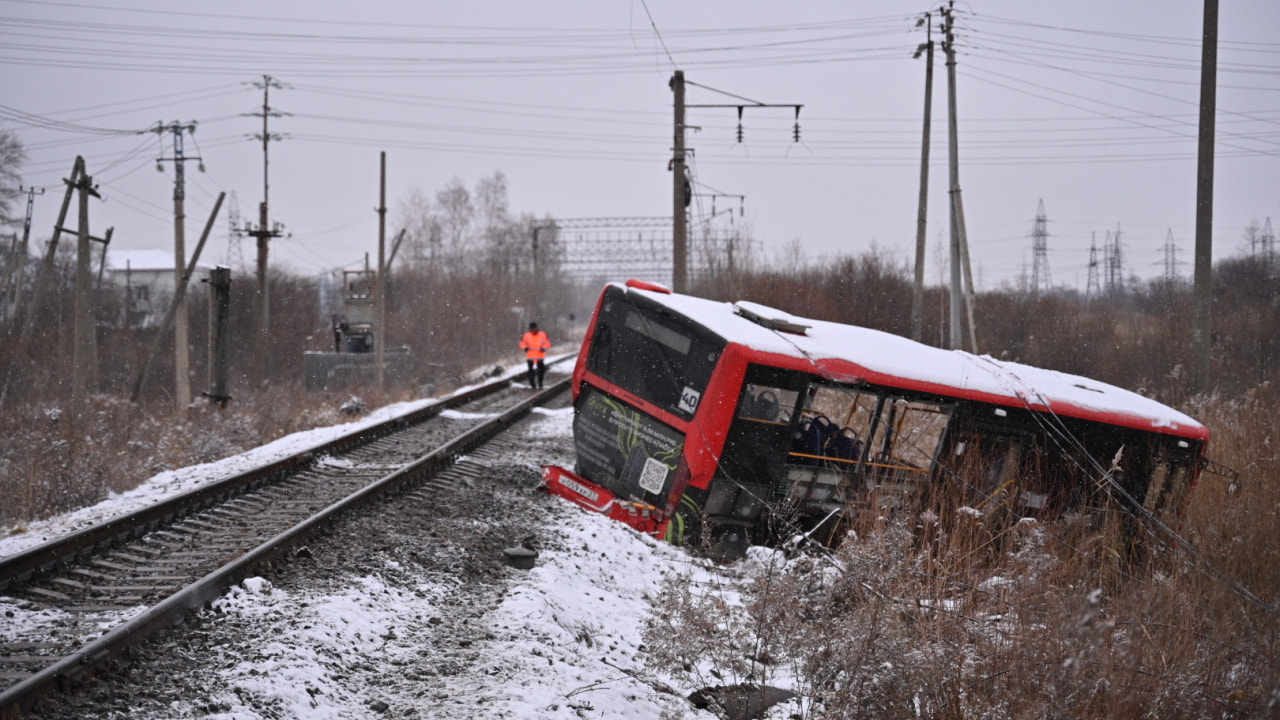
The railway crossing, which recently gained notoriety, is criticized by local residents because it’s very difficult to obey traffic rules here. The semaphore can show a red light for hours, even when there’s no train in sight, so drivers run the red light to avoid wasting time. If everyone followed the rules, a traffic collapse would occur at this location, local residents note.
– A situation regularly arises where empty train cars are released from the thermal power plant after unloading, but the station doesn’t accept them immediately. As a result, the trains wait on the approach track before the problematic crossing. Sometimes this lasts for several hours. The crossing is equipped with automatic signaling, and a prohibiting red light shows for drivers all this time. If drivers don’t break the rules, this situation creates a traffic collapse due to the lack of alternative roads in this area.
According to a city resident, tragedies were previously avoided thanks to the competent actions of locomotive engineers. Before reaching the problematic section, they typically approach the crossing directly, stop, wait for the traffic flow to slow down, and then sound a prolonged horn.
– Only after ensuring the maneuver is safe do the engineers begin moving. Thanks to the professionals. But this potentially dangerous situation has existed for a long time.
A local resident proposed solutions to the city administration. First: conduct briefings with all engineers performing shunting operations to deliver cars to TEC-3. Second: change the operating mode of the crossing signaling.
– Currently, there’s too long a section for circuit closure. That is, it could be shortened. So that trains standing 500-1000 meters from the crossing don’t close the circuit and switch the signal to red for car drivers.
There’s also a third, more financially costly option. It involves building an alternative road connecting Voronezhskaya Street via Yagodnaya Street to Karla Marksa Street.
– Other local residents also began reporting problems at the crossing after the high-profile accident. Recently, people noted the signal remained red from 7:55 PM to 8:30 PM.
– A traffic jam of cars formed. It was dark, dangerous to drive. A train didn’t even appear during this time. I request consideration of the issue of traffic regulation at this crossing. After all, in Second Khabarovsk and other places in the city, everything works fine, there are no such problems where the semaphore stays red for hours with no train in sight. This means it should be possible to fix things here too.
The city administration stated that railway crossing territories don’t fall under the city administration’s jurisdiction, but the municipality has already sent an appeal regarding traffic regulation to Russian Railways.
– Demands have already been sent from the administration. Traffic regulation matters in this territory are controlled by Russian Railways.
Regarding the construction of a new road bypassing the railway tracks, the city administration responded that the implementation of decisions concerning the construction of highways and transport interchanges is carried out as funding becomes available within municipal, regional, and federal programs. So there are no specifics regarding this proposal yet.
New details have emerged about the train accident that occurred at Orekhovaya Sopka on November 6th. It was revealed that the bus driver, a migrant and father of six children, had been involved in an incident at the crossing two weeks prior to the accident.
